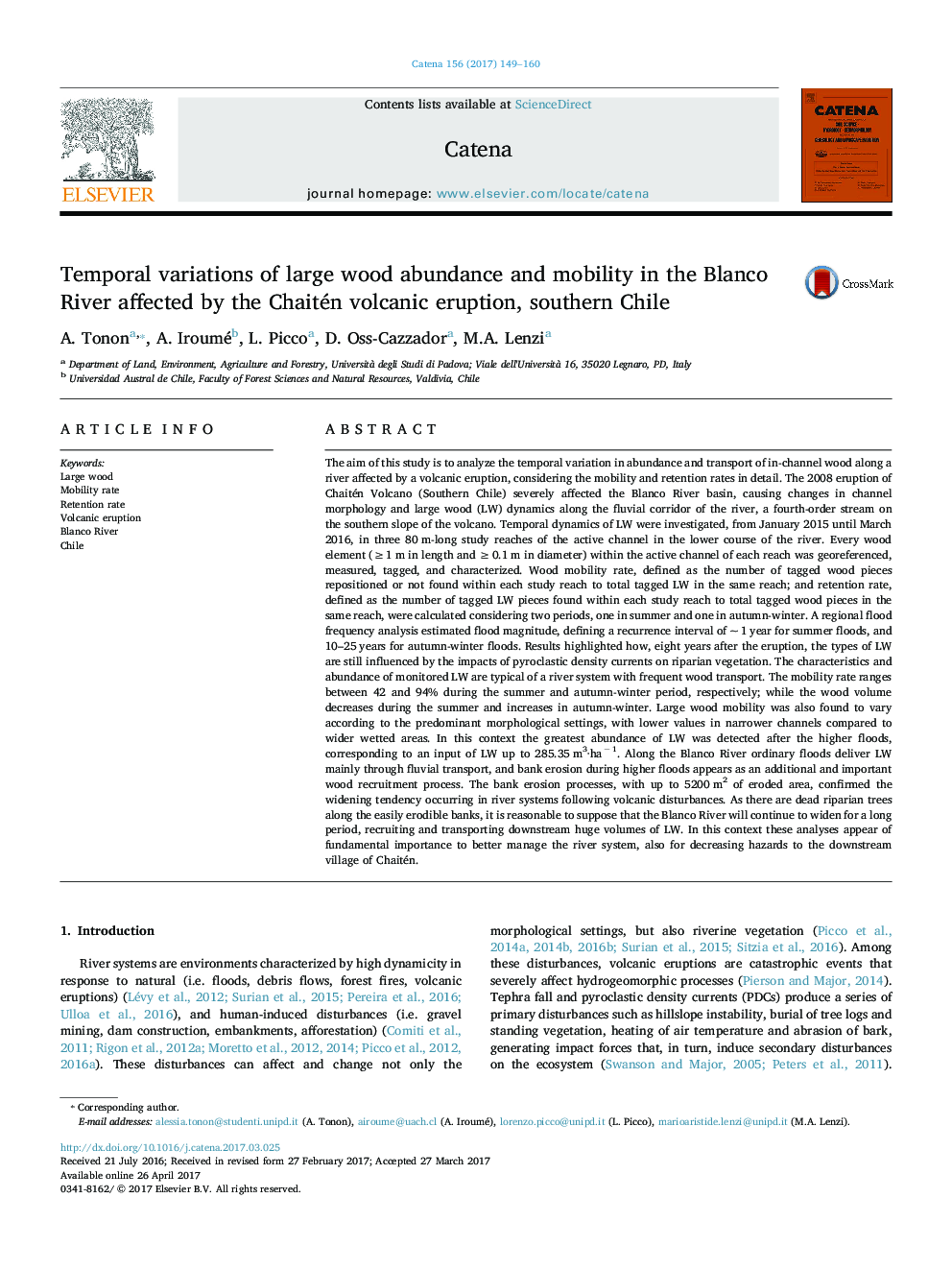| کد مقاله | کد نشریه | سال انتشار | مقاله انگلیسی | نسخه تمام متن |
|---|---|---|---|---|
| 5769991 | 1629198 | 2017 | 12 صفحه PDF | دانلود رایگان |

- The impacts of volcanic eruptions affect the types of in-channel LW.
- Dead riparian vegetation favors bank erosion and active channel widening.
- Variations in LW abundance depend on the magnitude of flood events.
- Mobility and retention rates of LW are influenced by local-scale morphology.
The aim of this study is to analyze the temporal variation in abundance and transport of in-channel wood along a river affected by a volcanic eruption, considering the mobility and retention rates in detail. The 2008 eruption of Chaitén Volcano (Southern Chile) severely affected the Blanco River basin, causing changes in channel morphology and large wood (LW) dynamics along the fluvial corridor of the river, a fourth-order stream on the southern slope of the volcano. Temporal dynamics of LW were investigated, from January 2015 until March 2016, in three 80 m-long study reaches of the active channel in the lower course of the river. Every wood element (â¥Â 1 m in length and â¥Â 0.1 m in diameter) within the active channel of each reach was georeferenced, measured, tagged, and characterized. Wood mobility rate, defined as the number of tagged wood pieces repositioned or not found within each study reach to total tagged LW in the same reach; and retention rate, defined as the number of tagged LW pieces found within each study reach to total tagged wood pieces in the same reach, were calculated considering two periods, one in summer and one in autumn-winter. A regional flood frequency analysis estimated flood magnitude, defining a recurrence interval of ~ 1 year for summer floods, and 10-25 years for autumn-winter floods. Results highlighted how, eight years after the eruption, the types of LW are still influenced by the impacts of pyroclastic density currents on riparian vegetation. The characteristics and abundance of monitored LW are typical of a river system with frequent wood transport. The mobility rate ranges between 42 and 94% during the summer and autumn-winter period, respectively; while the wood volume decreases during the summer and increases in autumn-winter. Large wood mobility was also found to vary according to the predominant morphological settings, with lower values in narrower channels compared to wider wetted areas. In this context the greatest abundance of LW was detected after the higher floods, corresponding to an input of LW up to 285.35 m3·haâ 1. Along the Blanco River ordinary floods deliver LW mainly through fluvial transport, and bank erosion during higher floods appears as an additional and important wood recruitment process. The bank erosion processes, with up to 5200 m2 of eroded area, confirmed the widening tendency occurring in river systems following volcanic disturbances. As there are dead riparian trees along the easily erodible banks, it is reasonable to suppose that the Blanco River will continue to widen for a long period, recruiting and transporting downstream huge volumes of LW. In this context these analyses appear of fundamental importance to better manage the river system, also for decreasing hazards to the downstream village of Chaitén.
Journal: CATENA - Volume 156, September 2017, Pages 149-160